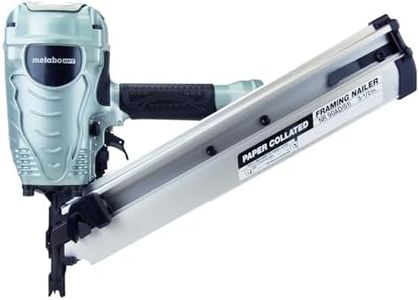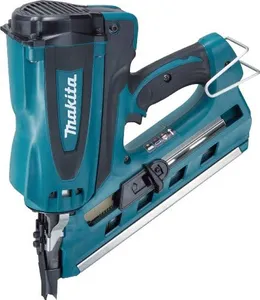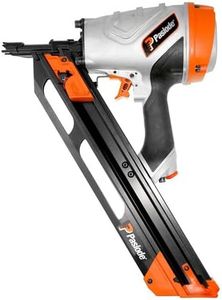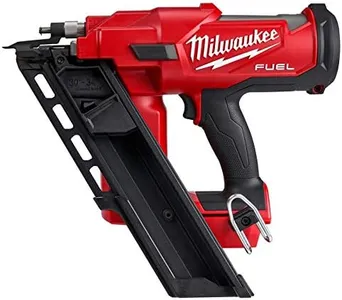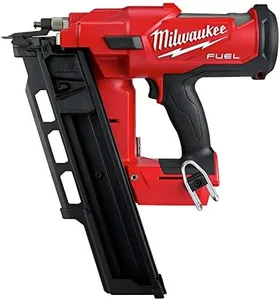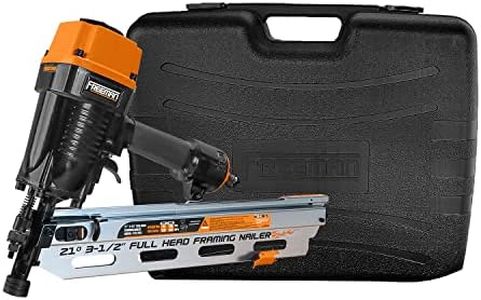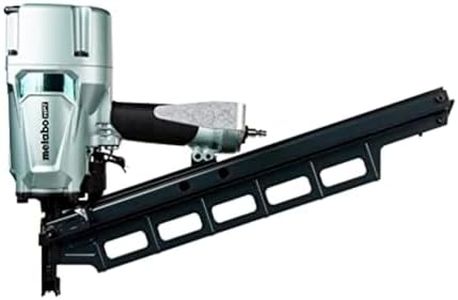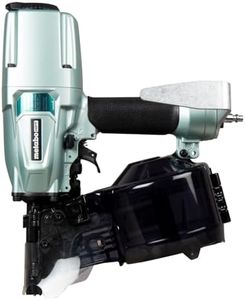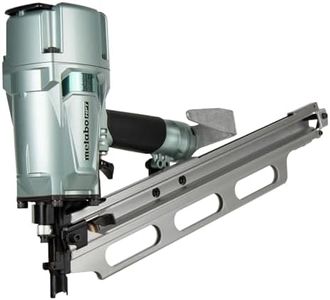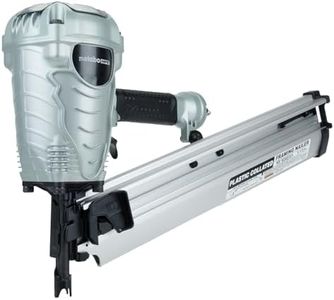We Use CookiesWe use cookies to enhance the security, performance,
functionality and for analytical and promotional activities. By continuing to browse this site you
are agreeing to our privacy policy
10 Best Framing Nailers
From leading brands and best sellers available on the web.Buying Guide for the Best Framing Nailers
Choosing a framing nailer can have a big impact on the ease and quality of your carpentry, construction, or renovation projects. A framing nailer is a powerful tool designed to drive nails quickly and efficiently into wood or other materials, making it a go-to choice for framing walls, building decks, or constructing fences. When picking the right tool, it’s important to consider the types of projects you’ll tackle, how often you’ll use it, and your experience level. Understanding the different specifications will help you select a framing nailer that meets your needs and feels comfortable to use.Power Source (Pneumatic vs. Cordless)The power source determines how your framing nailer operates—pneumatic nailers connect to an air compressor, while cordless models use batteries or fuel cells. Pneumatic nailers are known for consistent power, making them suitable for large jobs or frequent use, but they require you to work near an air compressor and hose. Cordless models provide greater portability and freedom of movement, ideal for quick tasks or locations where hauling a compressor isn’t practical. If you primarily work in one area or on big projects, pneumatic may suit you, but if mobility is crucial, cordless is worth considering.
Nail Size CapacityThis specification describes the range of nail lengths and sometimes thicknesses that the nailer can drive. Some nailers handle a wide selection of nail sizes, from shorter staples to longer nails needed for strong framing. For light framing or smaller projects, a nailer with a smaller range may suffice. If you want a versatile tool for various tasks, look for a broader nail size capacity. Check the sizes recommended for the type of construction work you’ll do to ensure compatibility.
Magazine Type (Stick vs. Coil)The magazine holds the nails and feeds them into the gun. Stick magazines are straight and generally lighter, but hold fewer nails, so you'll reload more often. Coil magazines are round and carry more nails, making them less prone to frequent refills, but they tend to make the tool heavier and bulkier. For overhead or time-sensitive work, the coil type may be more convenient, while for less repetitive work, a stick magazine could offer easier handling.
Weight and ErgonomicsThis refers to how heavy the nailer is and how comfortable it feels during use, affecting fatigue, especially in longer projects. Lighter nailers are easier to handle, particularly overhead or in awkward positions. Heavier tools may provide more power and durability, but can strain arms and wrists over time. When choosing, consider your physical strength, comfort level, and how long you'll typically be using the tool.
Depth AdjustmentDepth adjustment controls how deep the nail drives into the material, which is important for different types of wood or construction requirements. Some models offer tool-free adjustment for quick on-the-go changes, while others require extra steps. If you often work with different materials or want more flexibility, look for easy and precise depth adjustment. For straightforward jobs with the same materials, less flexibility may be acceptable.
Jam Clearing MechanismJams can slow you down and be frustrating, so some nailers come with mechanisms to clear jams quickly without extra tools. This ensures less downtime and less risk of damaging your material. If convenience and time savings are important, pick a nailer with a reliable jam-clearing feature. If you do occasional work, this may not be as critical.
Trigger Type (Sequential vs. Bump Fire)Trigger type affects the firing method. Sequential triggers require you to press the safety tip and then the trigger for each nail, providing more accuracy and safety. Bump fire allows you to hold the trigger and fire a nail every time you 'bump' the nosepiece onto the work surface, enabling faster nailing. For accuracy and safety, especially for beginners, sequential is better; for speed in experienced hands, bump fire may be preferable.
